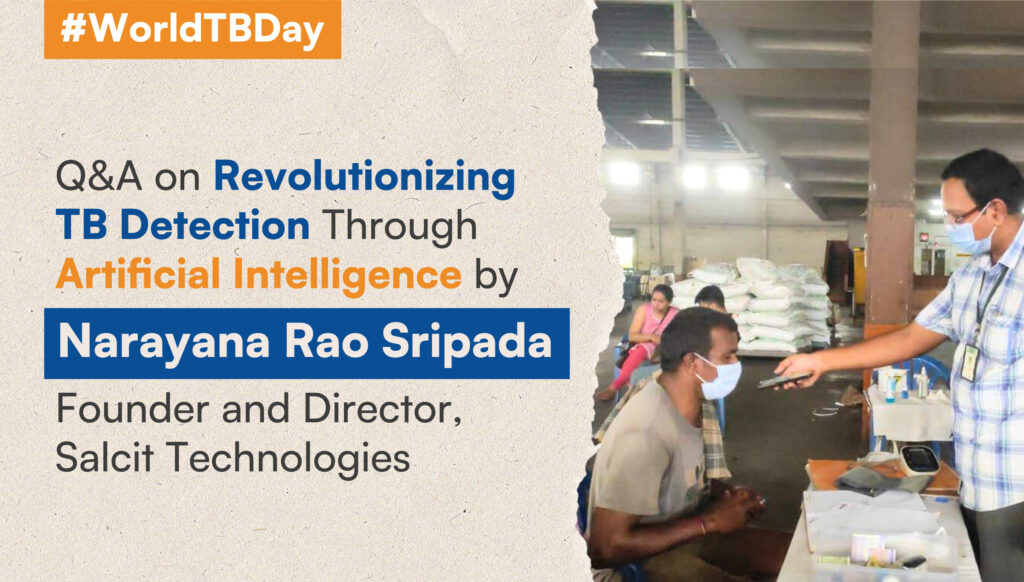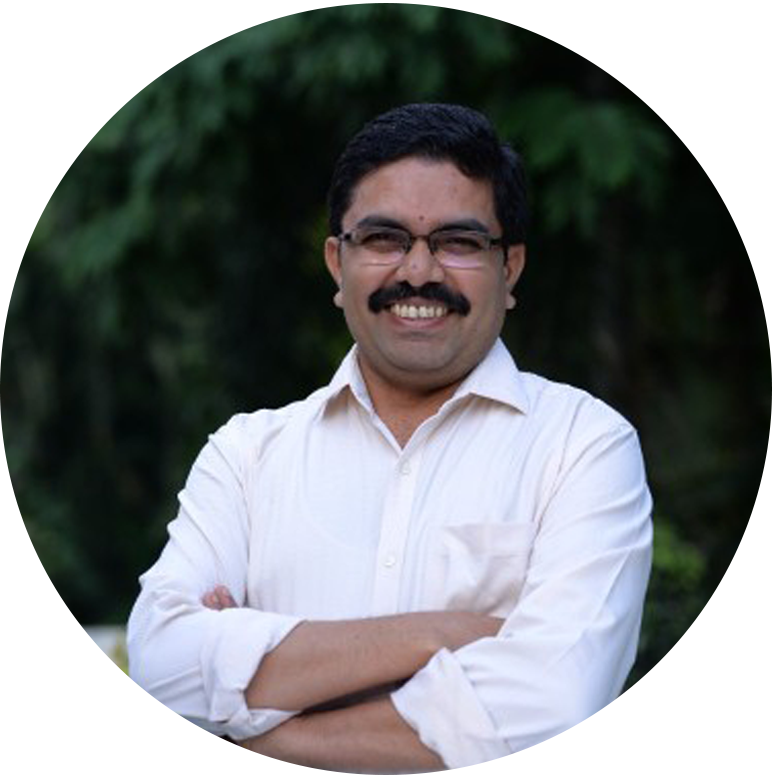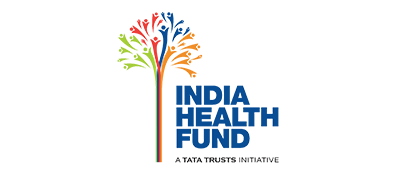
Developed by Salcit Technologies, and funded and supported by India Health Fund & ACT Grants, Swaasa emerges as a groundbreaking digital solution in the fight against respiratory diseases like TB, addressing the pressing need for real-time screening and diagnosis.
In the lead up to the World TB Day 2024, Narayana Rao Sripada, Founder and Executive Director of Salcit Technologies, shares his insights on how AI-powered Swaasa is furthering the fight against TB and the potential that digital technologies hold in taking us closer to a TB free future.
1. What inspired the development of an AI-powered cough analysis tool and why did you feel it was needed?
Respiratory diseases are a silent killer. Millions are dying from respiratory diseases when they don’t have to. When it comes to Tuberculosis, India has the highest burden in the world. The challenge is the inability to screen, diagnose and monitor lung health – at scale and in real-time. Affordable and accessible means to identify, screen at scale and prioritize high risk populations is the need of the hour. In order to address this gap we developed Swaasa, using cough as a marker to identify underlying respiratory problems.
2. How does Swaasa work and how effective is the technology?
Cough is a common symptom of respiratory diseases, and is caused by an explosive expulsion of air to clear the airways. The glottis behaves differently under different pathological conditions, which makes it possible to distinguish coughs originating from different underlying conditions such as Asthma, Tuberculosis, COPD and so on. Based on this underlying principle, we developed Swaasa using Machine learning (ML) and Deep Learning (DL) algorithms exploiting cough signatures. Swaasa can detect these disorders even through a forced cough.
3. How is it supporting Active Case Finding and touching lives (impact)? Where has Swaasa been deployed and what have been the outcomes?
In Karnataka, the Karnataka Health Promotion Trust (KHPT) is leveraging Swaasa as part of its efforts to enhance community health. KHPT, with a broader goal of building empowered and healthy communities, is utilizing Swaasa to improve the quality of presumptive TB cases through enhanced screening methods. This initiative, supported by the State TB Officer [STO] and is proposed to the MD of the National Health Mission, aims to improve yield and efficiency in TB detection. Swaasa has also been integrated into the Sampark Platform of C-DOT, a common service layer for various nodes. This integration enhances the capabilities of the platform, providing advanced respiratory health analysis as part of its services across the country.
4. How are healthcare providers and patients responding to it? Can you share some quotes/testimonials?
Vysavya Mahila Mendali (VMM) is one of our customers who recently screened 25 high-risk patients at a community center in Hindupur. Out of the 25 patients, Swaasa detected 11 as presumptive TB cases. These 11 patients underwent sputum tests at government hospitals, 5 of them turned out to be positive and are currently undergoing treatment.
The customer says that Swaasa is a very useful tool, especially in a community centers.
Similarly, Dr. Balu Palicheralu, who is the Director for Center for Digital Health and Artificial Intelligence at Paswaya Sriya Medical College, Chitradurga, he tested Swaasa on few TB patients and he identified Swaasa correctly picked up the obstructive lung disorders because development of chronic airflow obstruction may be a common risk for tuberculosis patients. And most importantly, what he said was that the tool picked up normal as normal, which is very key to the success of tools like Swaasa. So, he said the tool is good and all that is required is a good checklist to help the health workers at a community level.
5. What makes Swaasa unique and what are its key advantages?
Swaasa is not an incremental innovation to any existing method for lung assessment. It is not like making portable and economical spirometers or digital stethoscopes. Instead, we could use something that we all have in our pockets – a mobile phone with its ability to identify unique patterns in cough, making it a disruptive innovation.
6. How is support from India Health Fund and ACT Grants making a difference for Swaasa?
Technologies like Swaasa require support from various stakeholders to generate more evidence. Especially by doing multi-site validations and at community level, because this is where the tool is most useful. But as you all know, these validations required a good amount of funding and here is where the support from IHF and ACT is becoming very important. They are funding a multisite validation study of Swaasa. Once done, this will make Swaasa not only more robust, but government & other public health service providers will come forward for a wider deployment to improve TB case detection at the periphery.
7. What does the future hold for Swaasa as well as for Salcit Technologies?
On this World TB Day, let us reaffirm our dedication to eradicating TB by leveraging innovation and technology to reach those who need it the most. Together, with Swaasa and similar advancements, we can realize a future where TB is no longer a threat, especially in the remote and rural communities of our nation. With its ongoing pursuit of US FDA approval, Swaasa aims to expand its impact beyond India, offering a valuable tool in the global fight against TB.
8. Fill in the blank, “Yes we can End TB, if...”
Yes we can End TB, by empowering healthcare providers with tools that are not only effective but also easy-to-deploy and cost-efficient. We envision a future where every suspected TB case receives prompt attention and care.
9. In a country like ours with huge disparities in rural vs urban healthcare access, what potential do digital technologies like AI, ML and IoT hold?
In developing countries, the inequality between urban and rural health services is a major problem. Primarily this is because of the shortage of qualified healthcare providers and low quality of healthcare in rural areas. Application of Artificial Intelligence not only could improve physicians’ efficiency and quality of medical services, but frontline health workers could also be trained to use this technology to compensate for the lack of physicians’ availability, thereby improving the availability of healthcare access and medical service quality.
10. What do you believe are the main concerns that people have with AI and digital tech in healthcare and how can these concerns be assuaged?
AI-enabled healthcare products and services adoption in India remains low, particularly in public healthcare centres where clinical capacity is needed the most. The absence of clarity around regulations and standards discourages experimentation and adoption. Medics and hospital administrators across both the public and private sectors lack the confidence to move to prospective trials. To address this challenge public hospitals and the innovators of AI-enabled healthcare products must do simple pilot deployments, monitored by relevant officials and stakeholders and so allowing them to draw conclusions based on these requirements. This model of innovation is sometimes called a ‘sandbox’, that is to say, a limited space for exploration with low risk and close supervision.
About the Author:

Narayana Rao Sripada, is a seasoned professional, with extensive experience in Semiconductors, Wireless Technology, and IT. His expertise in Digital Signal Processing and systems software, honed at DRDO, Texas Instruments, HP, and Motorola, led to the creation of Swaasa®️ AI. With a US Patent for “Topic-wise Collaboration Integration” and co-invention of “A Method and System for Analyzing Risk Associated with Respiratory Sounds,” recognized by the Indian Patent Office. Narayana’s diverse background and inventive approach fuel his ongoing contributions to technology and healthcare solutions, as Founder and CTO at Salcit Technologies.
